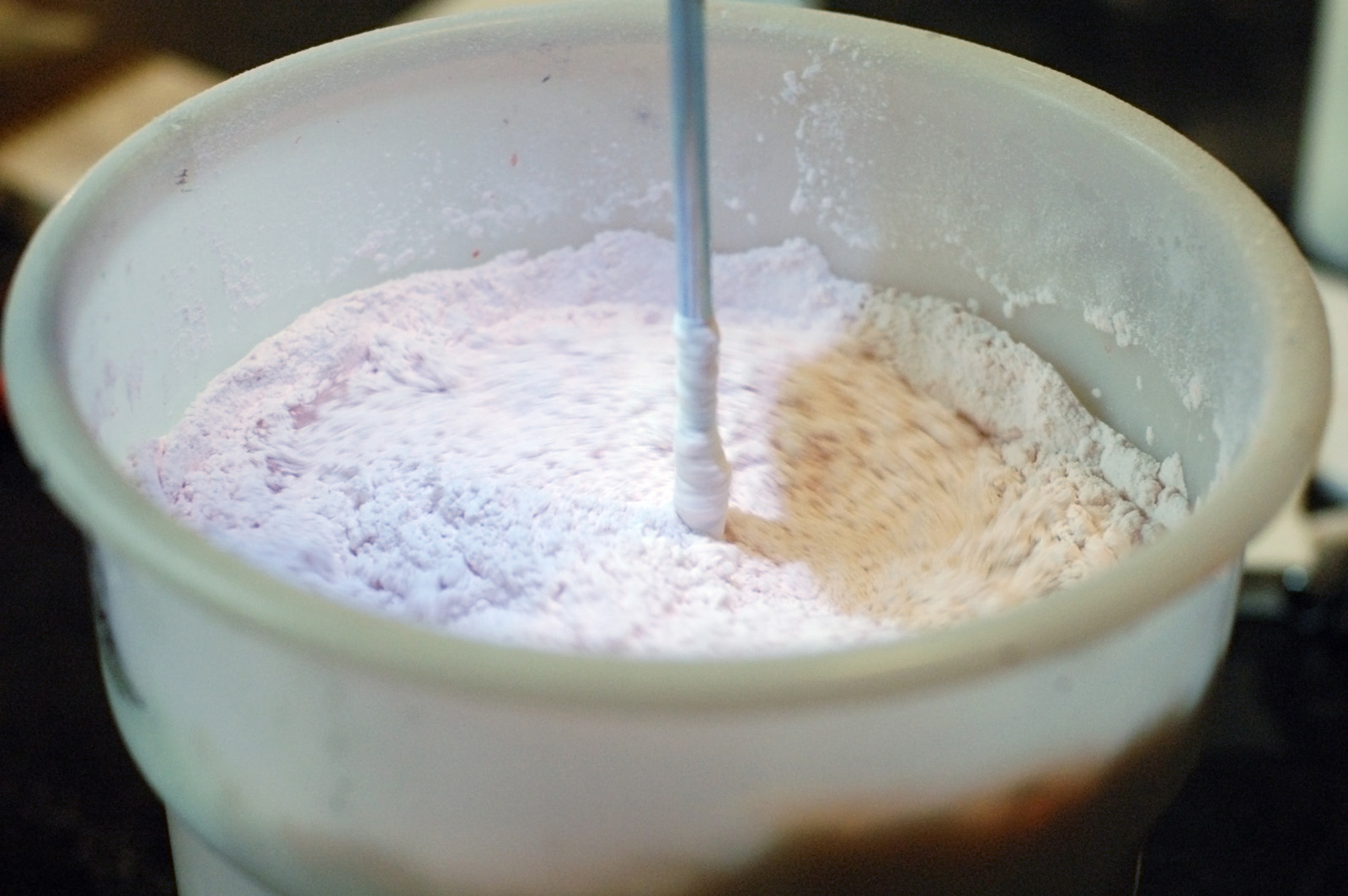Our last show of this calendar year was Titus Andronicus, which, depending on the budget, could be a prop person’s dream or nightmare. Meghan Buchanan was the prop master on this show, and her company, Paper Mâché Monkey, was handling most of the acquiring and construction of the props. Since King Lear was winding down, I offered to lend a hand, and as luck would have it, they needed a hand. Jay O. Sanders hand, to be precise; after he cuts it off, it shows up in a later scene.
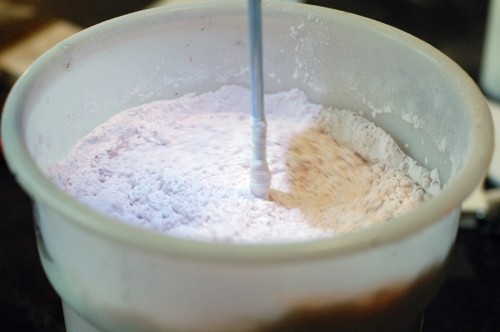
Life casting a hand is one of the easier parts to do; the only tricky part here was that they were rehearsing uptown at Second Stage Theatre and I only had an hour, so I had to prep everything beforehand so I could be in and out like a ninja hand caster before anyone knew what had happened.
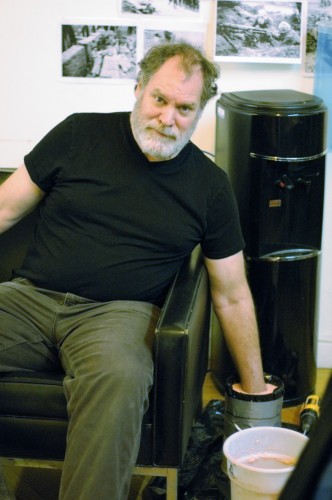
I used alginate because it’s cheap, non-toxic, safe on the skin, and sets up quickly. It’s made from seaweed and used in dentistry to make molds of your teeth and gums. After mixing the powdered alginate with water and filling a hand-sized container, I asked Jay to pose his hand and submerge it. It doesn’t heat up like plaster; it just slowly thickens. In about ten minutes, it had solidified enough to where Jay could remove his hand. It’s stretchy enough that he could pull his hand out without breaking or tearing the mold (if done slowly), and it doesn’t really stick to anything (no mold release is needed). The little bit that does stick can be washed off with water.
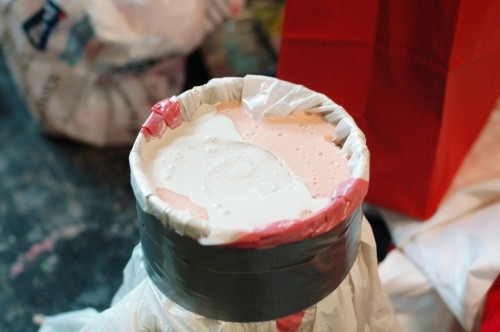
The thing with alginate is that it starts shrinking right away as it loses water. You only have about two or three hours to make a cast before it has shrunk noticeably. I mixed up some plaster while still at Second Stage and poured it in. After it had hardened enough, I packed up my stuff and took the subway back down to the Public Theater.
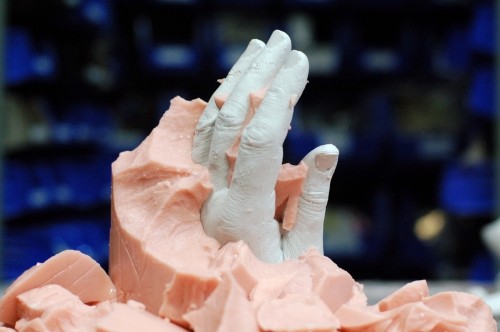
Now I could just tear the alginate away until the plaster hand was free.
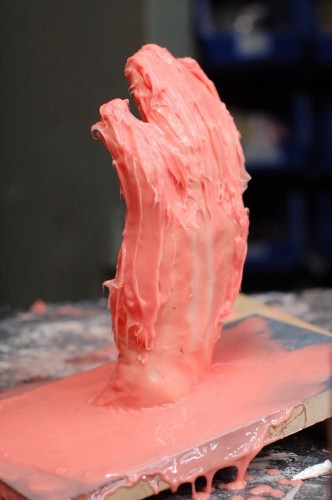
I decided to do a brush-on mold for this because of the shape of the hand. I had only attempted a brush-on mold once before and it didn’t go so well. This time around was only marginally better. I ended up making it work, but that’s about the only good thing I could say. After the rubber mold set, I built a two-piece plaster shell around it for support. I ended up having to cut open some of the silicone mold to remove the plaster hand inside.
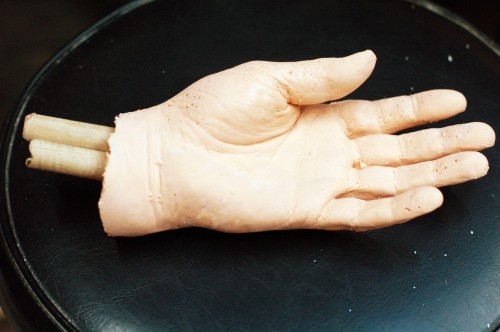
I cast the hand itself out of Smooth-On Dragon Skin, which long-time readers may remember being used in both the dead body and head for The Bacchae, as well as the dead lamb for Little Foxes. Dragon Skin itself cures fairly translucent and colorless, so I tinted the whole mix with a flesh color. I also embedded some dowels inside to cut down on the amount of silicone rubber I would need and to act as bones.
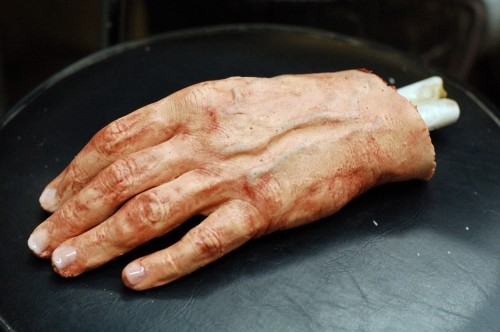
I “painted” more Dragon Skin over top, tinted with different colors. I rubbed some darker colors into the cracks and crevices to give it a bit of depth, and added a bluish tint onto the veins. I was using a fairly thick mix so it wouldn’t run. Silicone rubber is self-leveling unless it is thickened, and it can be pretty glossy if allowed to do that. I didn’t want that on the hand, but I took advantage of that for the fingernails, where I used a pretty thin mix and only a touch of color to get a shiny and translucent effect.
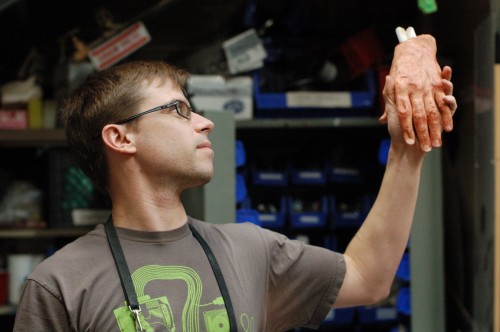
The hand has gone through some changes since I took these pictures; the bones on the back were cut down in length, and a lot more blood was painted on. All told, it only took about three days between them asking me to lend a hand making a cast of a hand to the cast having a hand in hand for rehearsal.

